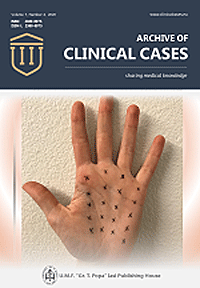Chronic myeloid leukemia (liver)
Leukemia is a monoclonal malignant proliferation of stem cells of bone marrow, with replacement of normal bone marrow by leukemic cells, accumulation in peripheral blood and infiltration of organs (i.e., lymph nodes, spleen, liver, kidney). As a result of bone marrow infiltration, one or all series are suppressed, generating pancytopenia (anemia, neutropenia and thrombocytopenia).
Leukemia classification, based upon clinical and histogenetic criteria :
- Acute leukemias (proliferation of young, immature elements)
- Lymfoblastic
- Myeloblastic
- Chronic leukemias (monoclonal proliferation of non-functional lymphoid and myeloid elements)
- Lymphocytic (lymphoid)
- Granulocytic (myeloid)
Chronic myeloid leukemia is a malignant lymphoid proliferation of all hematopoietic series, prominently granulocytic precursors. In 90 % of cases, t(9;22) is present (translocation between chromosomes 22 and 9). This results in formation of Philadelphia chromosome and BCR/ABL gene (which produces an abnormal protein with strong tyrosine-kinase activity).

Chronic myeloid leukemia (liver). Pleomorphic tumor infiltrate : rare blast cells (myeloblasts, promyelocytes) and numerous myelocytes, neutrophils, basophils, eosinophils, metamyelocytes, mature leukocytes. These tumor cells infiltrate and dilate the portal tracts, but especially the sinusoids. (H&E, ob. x20)

Chronic myeloid leukemia (liver). (H&E, ob. x40)

